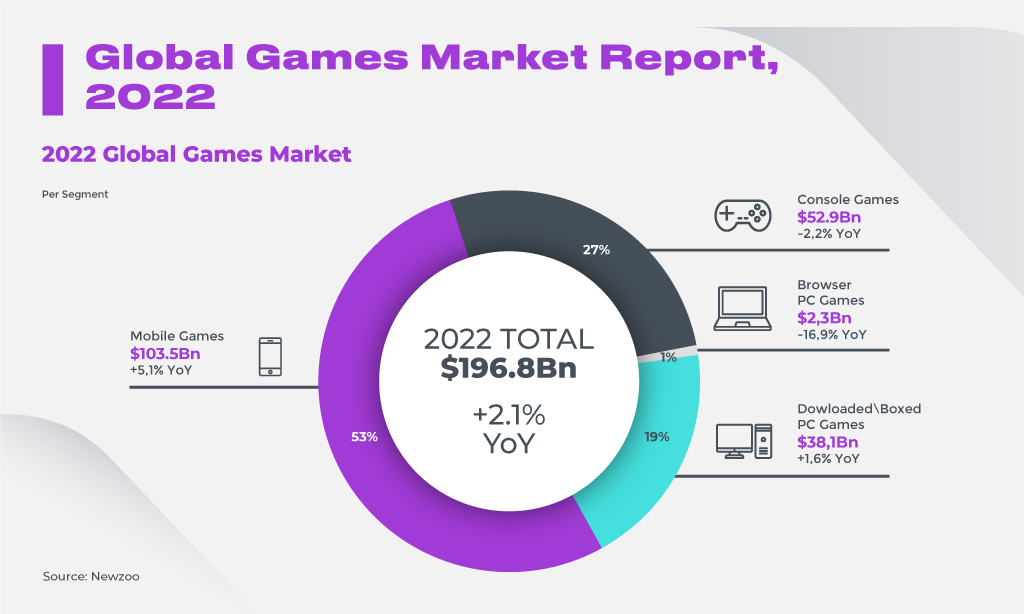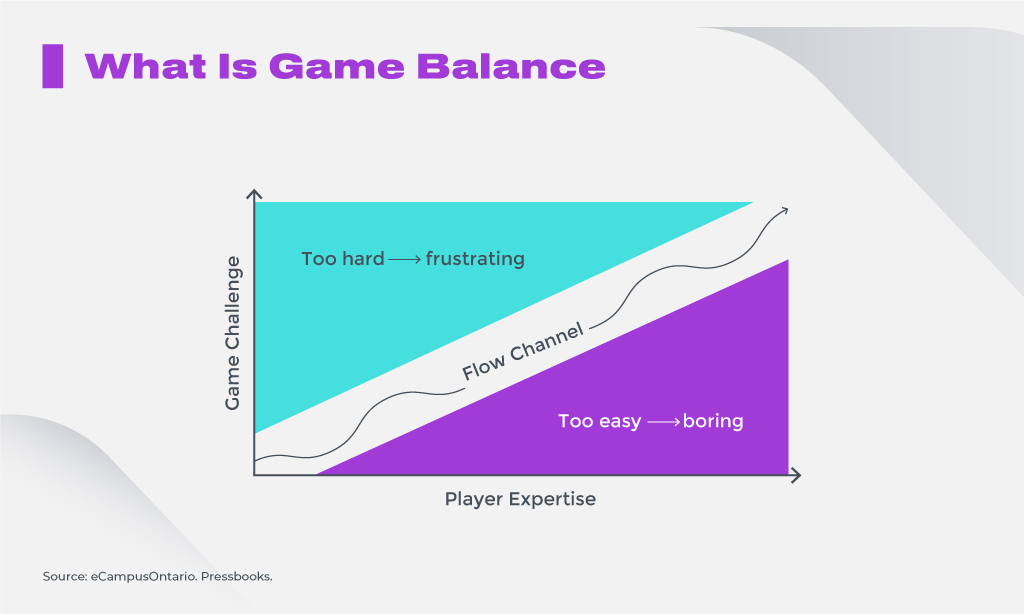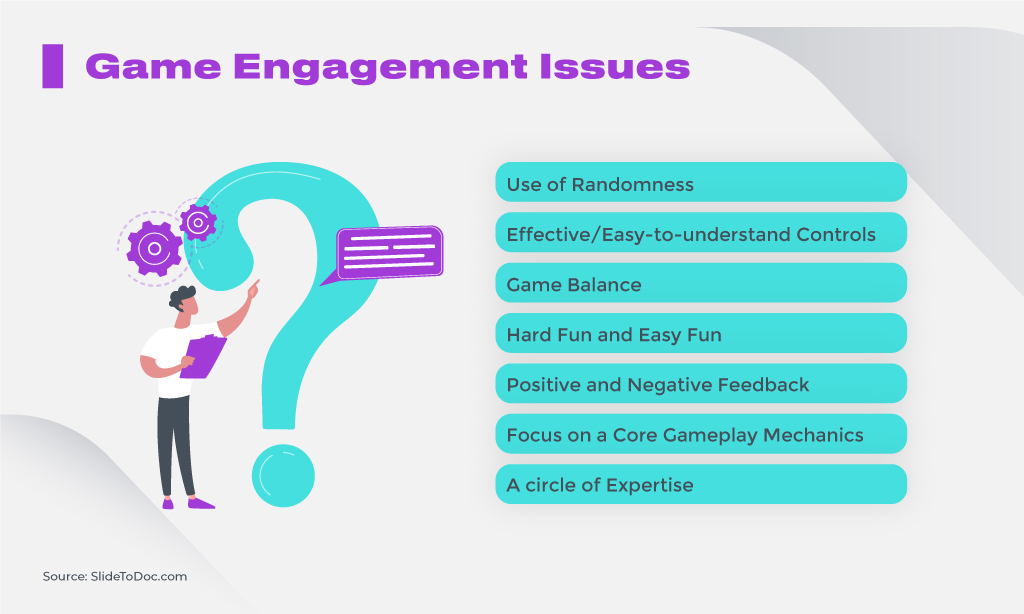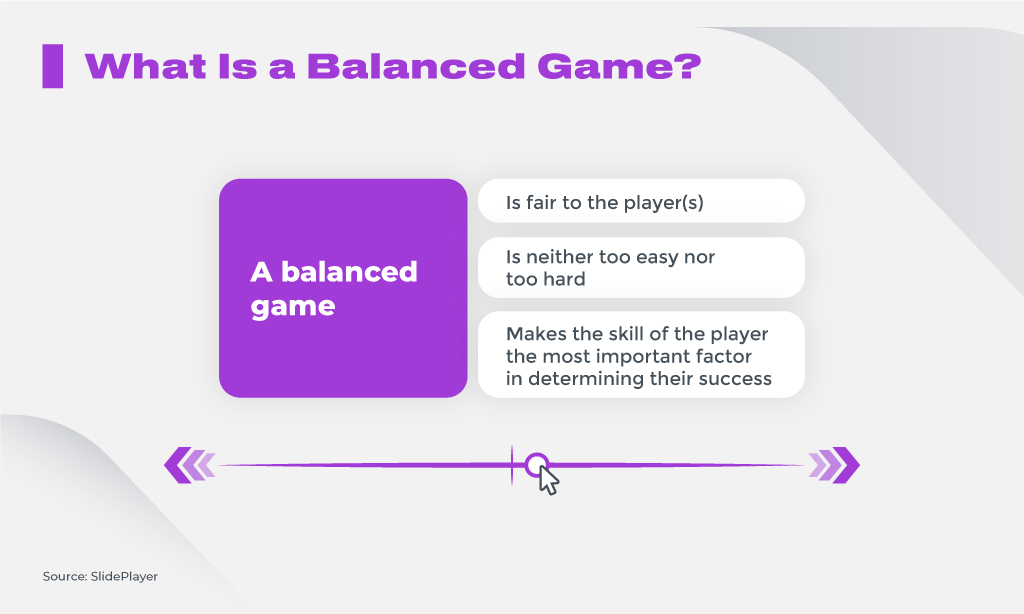Game balance is a crucial aspect of any game design. Have you ever played a game that was either too easy or too difficult to progress through? It can be frustrating to play a game with zero challenges, where victory is guaranteed from the start, or one that seems impossible to complete no matter how much time and experience you have in gaming. These types of poorly balanced games are inferior and poorly designed, and ultimately, they fail to attract and retain an audience.
The game market is growing, and so is the competition. Unique, well–balanced gameplay is essential for success. As a developer and designer, you must find the “sweet spot”. You need the right number of characters with just enough challenges to keep the player engaged and having fun while moving forward at a reasonable pace. These are critical issues to perfect in order to monetize games quicker and improve the ROI of your game.

Paying attention to what makes a game ‘fun’ is important whether you’re talking about mobile game design, online gaming, or the development of console games. Game balance is a critical feature that helps achieve higher player satisfaction.
Mark Brown, the founder of a popular Patreon project, “Game Maker’s Toolkit,” has unveiled several game characteristics needed to create top titles. Game balance was among them. In his YouTube tutorial about perfect game balance, he mentioned that some companies even have special departments to deal with game balance concepts.
For example, for a complex game like League of Legends, it’s crucial to balance item stats, champion strength, and general game interactions to keep the community happy.
eCampusOntario, a professional educational platform, conducted research about game balance design and provided a valuable insight into its modern vision. They stated that any game testing process should be evaluated by two factors:
- how easily experienced players accomplish goals, and
- how attainable it is for newcomers to succeed.
Both parties should be satisfied with the gameplay.


